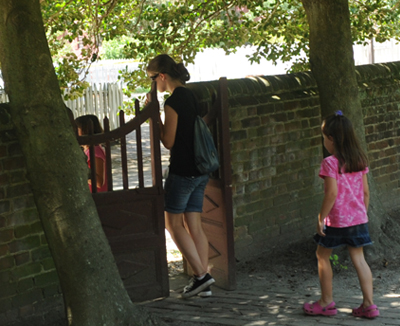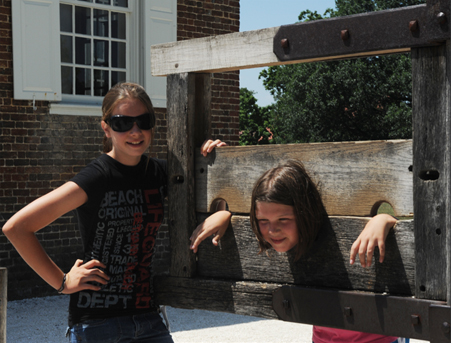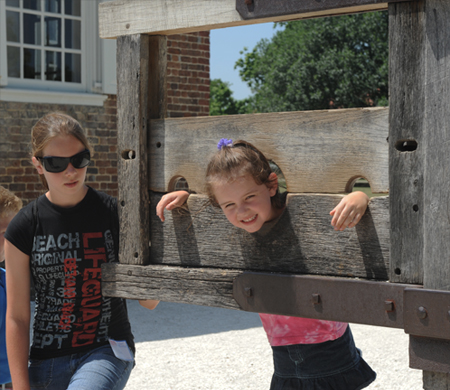Touring Colonial Williamsburg
Saturday, July 24, 2010
 | This brass model of Colonial Williamsburg is outside the Visitor Center. We walked over most of the locations where the buildings are. |
Jeff and family in the Visitor Center with a mural of one of the reenactments. We watched a well-done introductory film about the time. Then we caught the shuttle bus over to the main street of Colonial Williamsburg. |  |
 | This morning's street dramatization of the events of April 29, 1775 began with a public meeting outside the Raleigh Tavern. It protested the removal by Lord Dunsmore of the English forces of the gunpowder from the Public Magazine of Williamsburg. There were threats of retaliation. |
As Peyton Randolph, president of the Congress, prepared to leave for Philadelphia, news of the battles of Lexington and Concord arrives. |  |
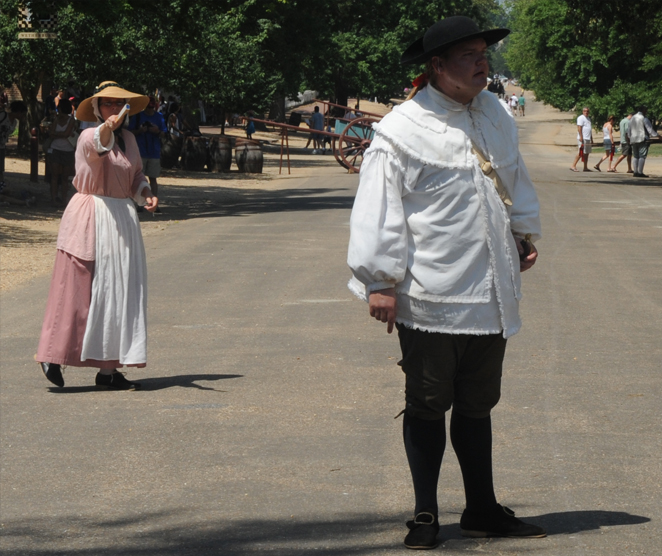 | Williamsburg citizens speak out in strong opposition to the English actions. |
A black speaker talks about the dilemmas facing the slaves in this time of conflict. |  |
 | The love of Edmund Randolph and Elizabeth Nicholas for each other must survive the turmoil of intense family differences about the conflict with Britain. She responds to a note with the news that his family will flee to England. His father is steadfastly loyal to the British king, but hers is firmly patriotic. |
But the younger Randolph has come to favor the patriots, and he has the blessing of her father. So the final act of this drama is a marriage proposal. The drama depicts events of July 27, 1775. | 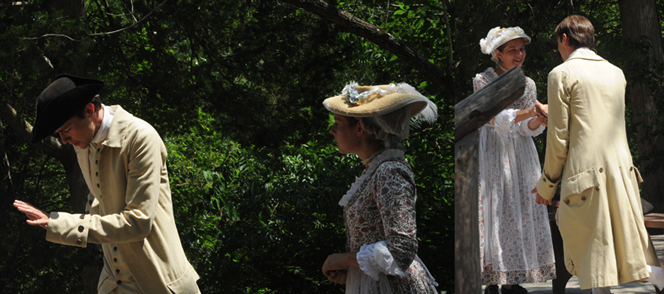 |
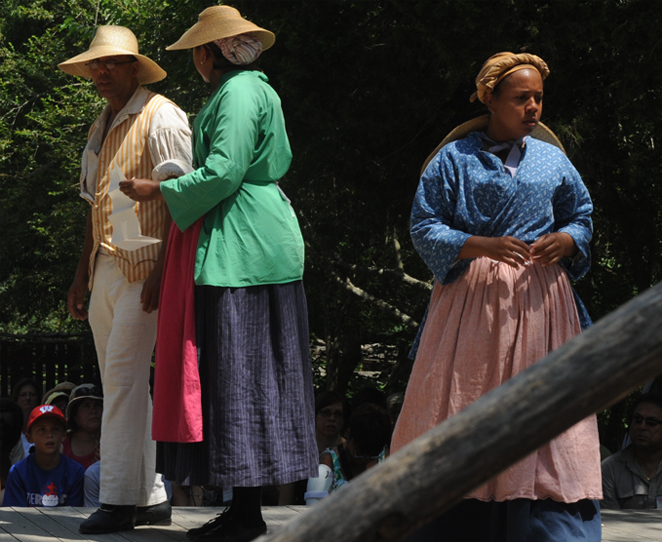 | The conflict posed great problems for the slaves. British Lord Dunsmore's proclamation promised freedom to slaves who cooperated with the British forces (if their masters were rebels), but there were great dangers for their futures. This was a dramatization of events of November 17, 1775. |
The fife and drum corps precedes the opening of a meeting at the Williamsburg Capitol on May 15, 1776. | 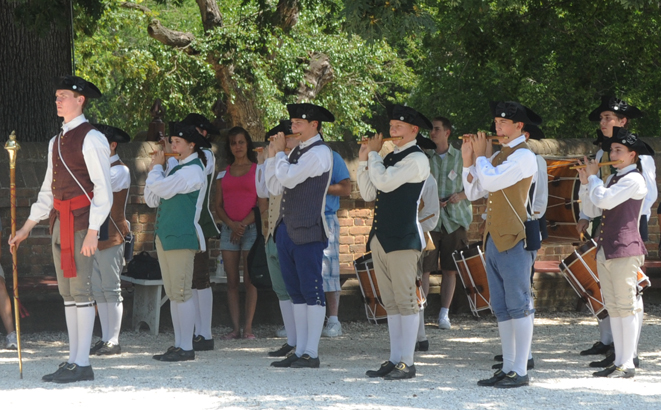 |
 | Patrick Henry and the other representatives of the free men of Virginia pass resolutions for independence from Great Britain and prepare to establish a republican form of government. |
The British flag was taken down and the flag of the United States was raised. The thirteen stripes represent the thirteen colonies. | 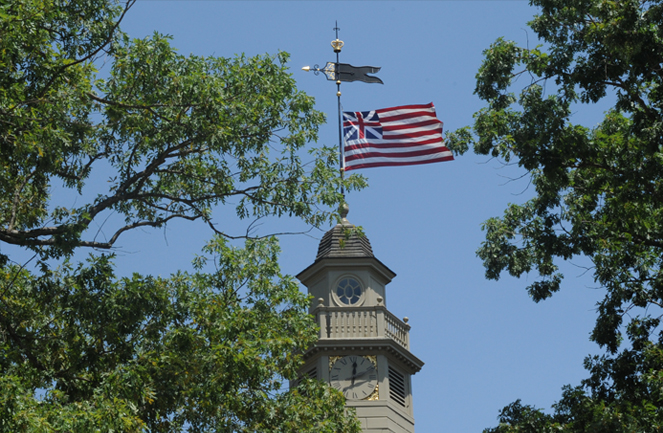 |
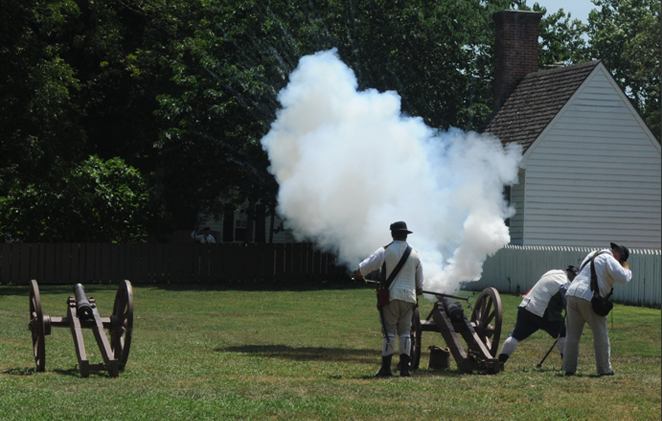 | They fired off a cannon salute to celebrate the raising of the flag of independence. I don't know how historical it was, but it was certainly a crowd pleaser! |
After the street enactments, we wandered down the main street of Willamsburg and visited some of the shops. In this apothecary, the lady showed us a wicked-looking tooth-extraction tool, and of course a mortar and pestle, and described some of the medical practice of the time.
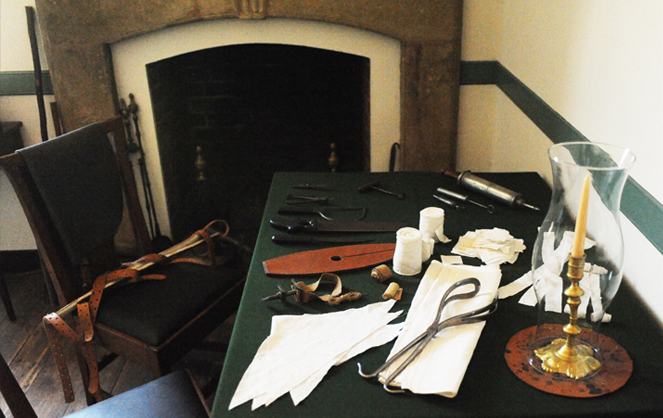 | They had a display of historical medical instruments of the time. Brenda immediately recognized the delivery forceps and some of the other devices. But the instrumentation was quite different when she scrubbed in surgery! |
The apothecary was used for medical education and had a classroom with the obligatory skeleton. This was the Pasteur and Galt Apothecary Shop, operated by William Pasteur and John Minson Galt. They had traveled to England to study medicine before returning to partner in this shop from 1775 to 1778. In addition to dispensing drugs, they provided surgical, midwifery, and general medical services. |  |
 |  We wandered the well-kept streets of Williamsburg on this very hot day which reportedly reached 108 F. We got fruit and drinks from the foodstore shown below and found a shady spot to eat in the back courtyards. |
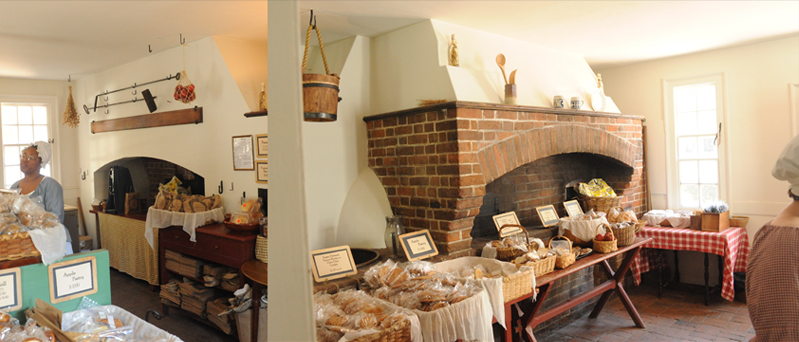 The foodstore was an old kitchen building with two rooms, each with huge fireplaces.
The foodstore was an old kitchen building with two rooms, each with huge fireplaces.
 | The passage of the Colonial fife and drum corps down the street was used to precede events on the street. |
The lady in the dress shop was well-informed about the history of dress-making in Colonial times. They didn't have patterns, and usually just fit the garment to the person, often going to their home to do so.
 | The jewelry store and silversmith shop was quite fascinating to me. In period costume, the clerks were quite knowledgeable. |
I was interested in the tools used to fashion the silver. There were lots of custom polished forms for hammering the silver. | 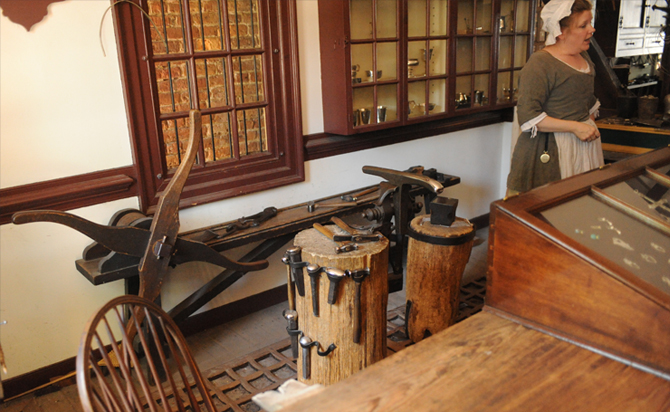 |
 | This girl is using a wooden mallet to hammer a thin silver bowl into form on a highly polished metal form. 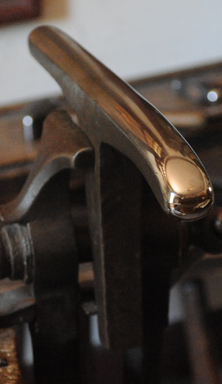 |
The two young women worked steadily with their wooden mallets, using different polished metal forms held in a vise. | 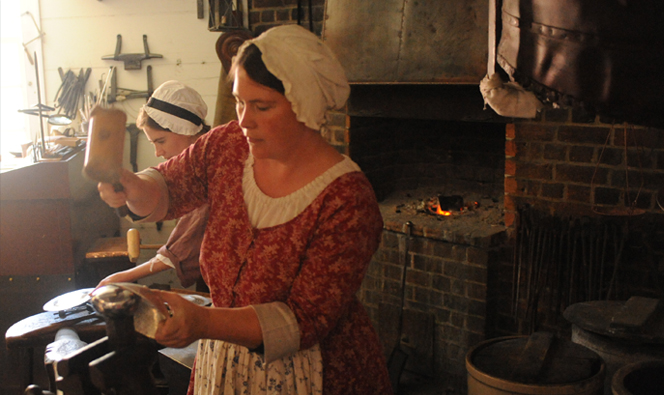 |
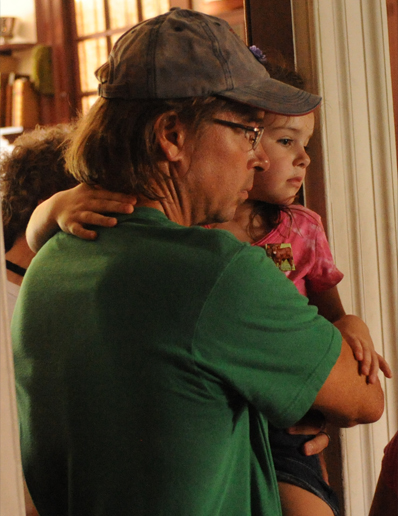 | Jeff and Elyse watch the making of silver bowls. I found this a surprisingly pleasant and peaceful shop, despite the clutter and the hammering. It genuinely evoked a time when you could calmly go about a craft and make pleasing and useful things. 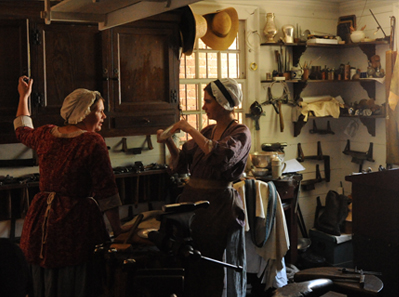 |
The Tarpley Store was a popular and crowded place, both with merchandise and with people. We visited it at least four times while we were in Williamsburg. Even I enjoyed it, not for the shopping, but by just being the doorkeeper of an awkward door. Not caring about the shopping, I got to visit with lots of people.
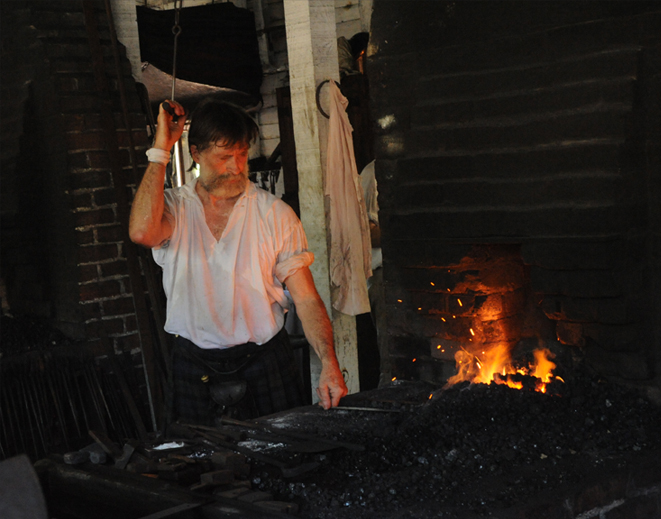 | Another fascinating place for me was the blacksmith shop. Operating a hand bellows, this guy was heating iron and making large nails by cutting the redhot iron and hammering them into shape. Another part of the story was that he was wearing a Scottish kilt. It seems that the English had some Scottish prisoners of war in that period that were pressed into service in the colonies. |
Pulling the redhot iron from the flame, he would hammer a point on it and then cut the molten iron and form a head on it before it cooled. |  |
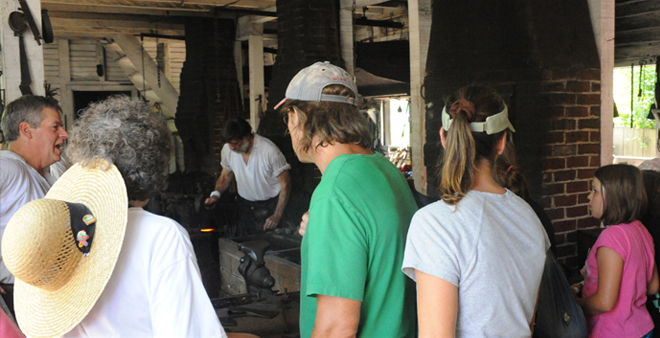 | The narrator of the shop told us about the different types of metalwork in the colonies and the kind of products made. Some of the blacksmith shops made or repaired weaponsd during the Revolution. |
We examined the iron tools that had been crafted while the poor Scottish slave toiled on.
The costumed Colonials stayed in character when they were on the street, and were very friendly and helpful. Above right, we head down a stair through some monstrous crepe myrtles to visit the Bookbinder Shop.
 Jeff and Darla watch as the bookbinder places a leather binding on a newly constructed book. Jeff and Darla watch as the bookbinder places a leather binding on a newly constructed book. 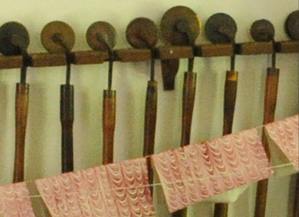 | 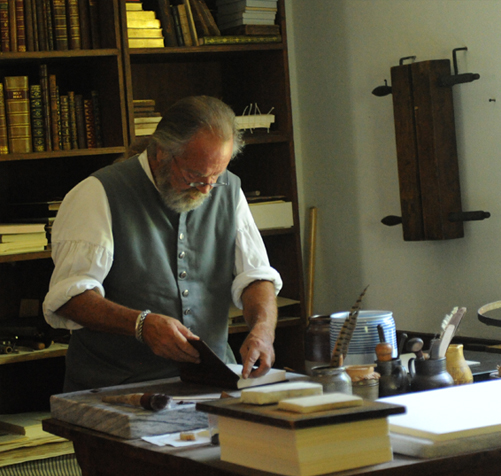 |
 | He attaches the rather thick leather cover and then smooths and fits the leather binding with special tools. He explained that a book cost several days ordinary wages, so they were relatively very expensive compared to the current day. |
Jordan and Brenda examine some of the hand-made books. | 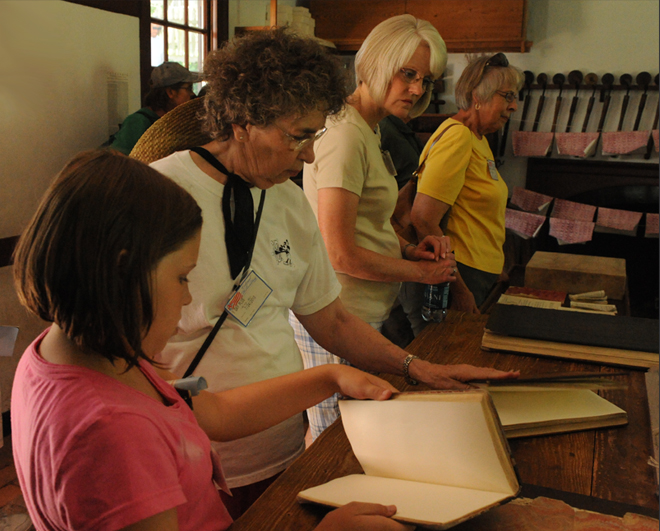 |
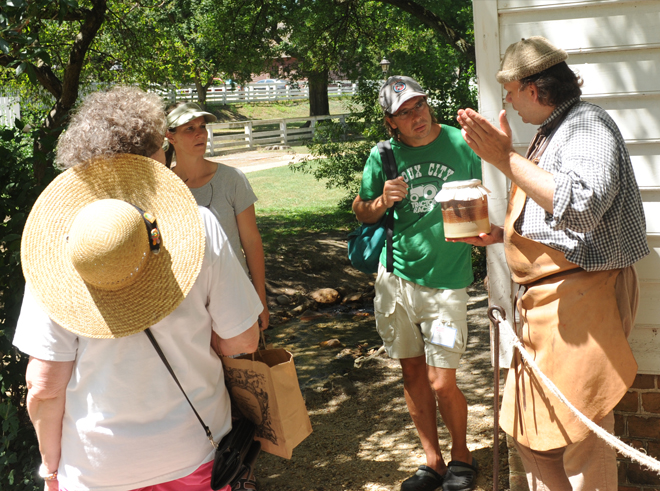 | Outside the shop we encountered another worker carrying a pot of glue for bookbinding. He took the time to explain to us the kind of glues they could make in colonial times from dairy and agricultural products. |
We walked on down the street to the Courthouse where Jordan and Elyse got put in the public stocks. Then Ashleigh and Jordan both tried out the leg stocks.
|
Index
2010 |














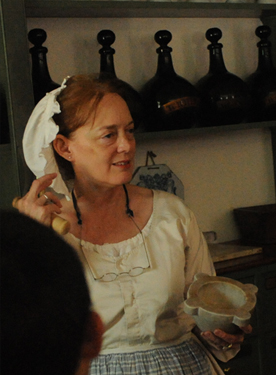

















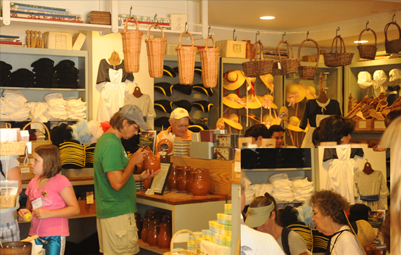
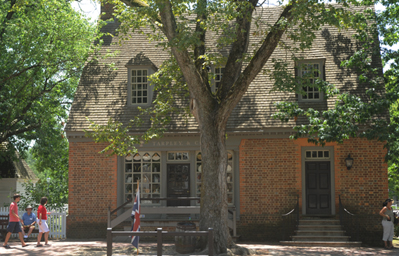




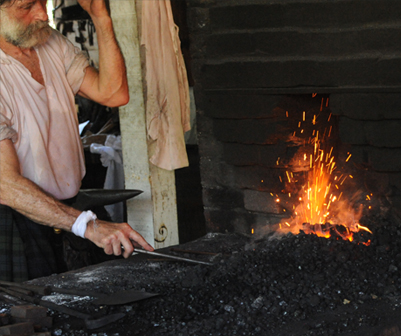
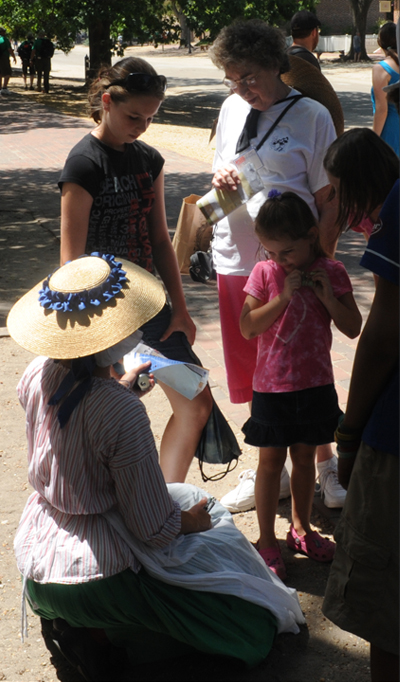

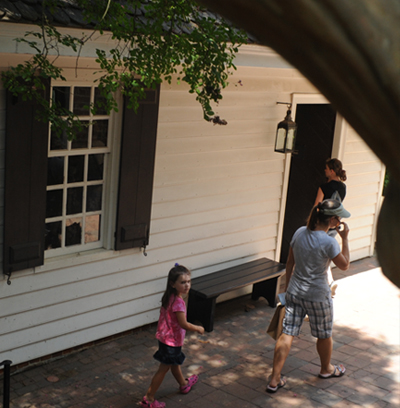
 Jeff and Darla watch as the bookbinder places a leather binding on a newly constructed book.
Jeff and Darla watch as the bookbinder places a leather binding on a newly constructed book. 





